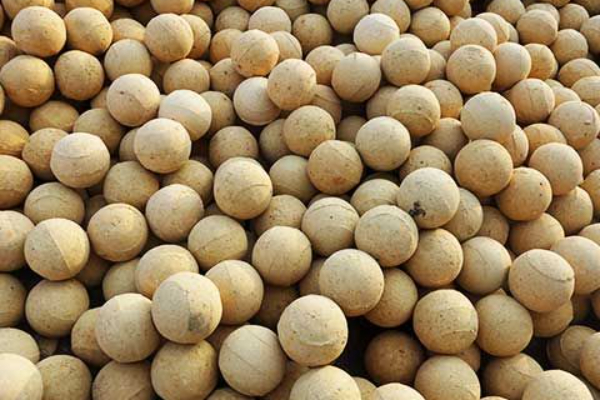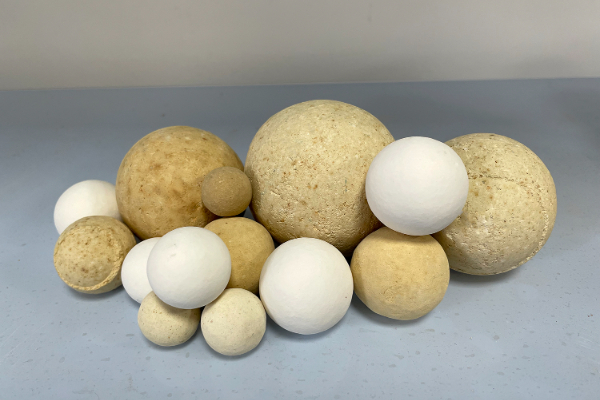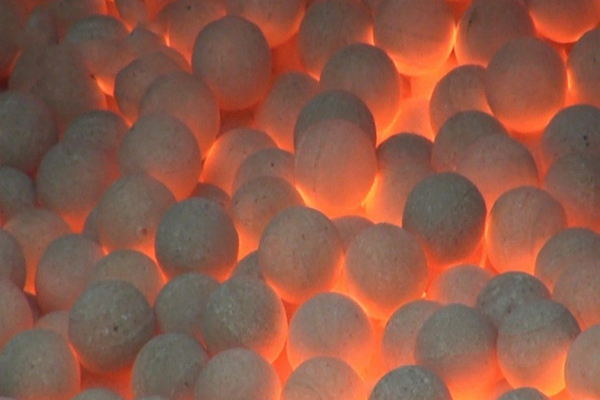High-aluminum refractory balls is also called high-aluminum heat storage balls. High-aluminum refractory balls are made of high-alumina bauxite as the primary refractory raw material, adding powder, additives, and binders, and are proportioned, formed, and sintered at high temperatures. High-aluminum refractory balls’ production process is similar to that of high-aluminum refractory bricks, and should be determined based on the characteristics of raw materials, the required production conditions of high-aluminum refractory balls, and other factors.
Characteristics of high aluminum refractory balls

- High fire resistance: High aluminum balls have excellent fire resistance due to their high alumina content and can resist thermal shock, thermal expansion, and other factors in high-temperature environments.
- Corrosion resistance: It has strong corrosion resistance to chemicals such as acids and alkalis, and is suitable for equipment working in corrosive environments.
- High strength: High aluminum balls usually have high compressive strength and wear resistance, and are suitable for working conditions with severe wear.
- Thermal conductivity: Generally, the thermal conductivity of high aluminum balls is relatively high, which is important in some high-temperature processes.
High-aluminum heat storage ball size

The sizes of high-aluminum refractory balls are divided into 40mm, 50mm, 60mm, 80mm, and other sizes of refractory balls. The size of the high aluminum refractory ball can also be customized according to customer needs.
Application fields of high aluminum refractory balls

- Metallurgical industry: used for lining the furnaces of high-temperature smelting furnaces for smelting metals, aluminum, magnesium, etc.
- Cement industry: used for lining cement rotary kilns and rotary furnaces.
- Petrochemical industry: used for lining of petroleum refining and petrochemical equipment.
- Glass industry: used for the lining of glass furnaces.
- Others: It is also widely used in high-temperature equipment linings in steel, fertilizer, electric power, and other industries.
 Rongsheng Group
Rongsheng Group

WeChat
Scan the QR Code with wechat